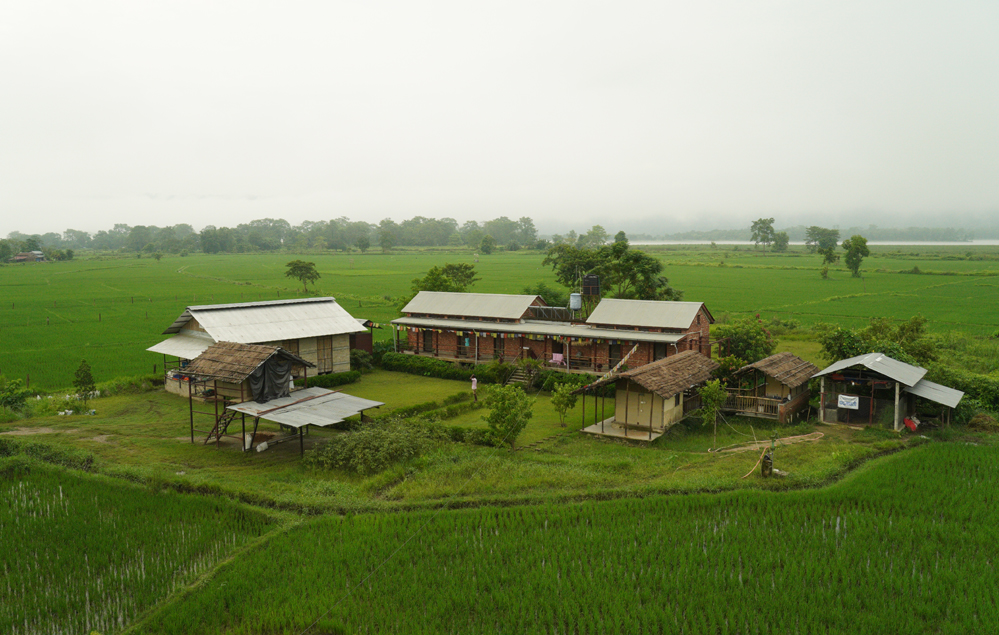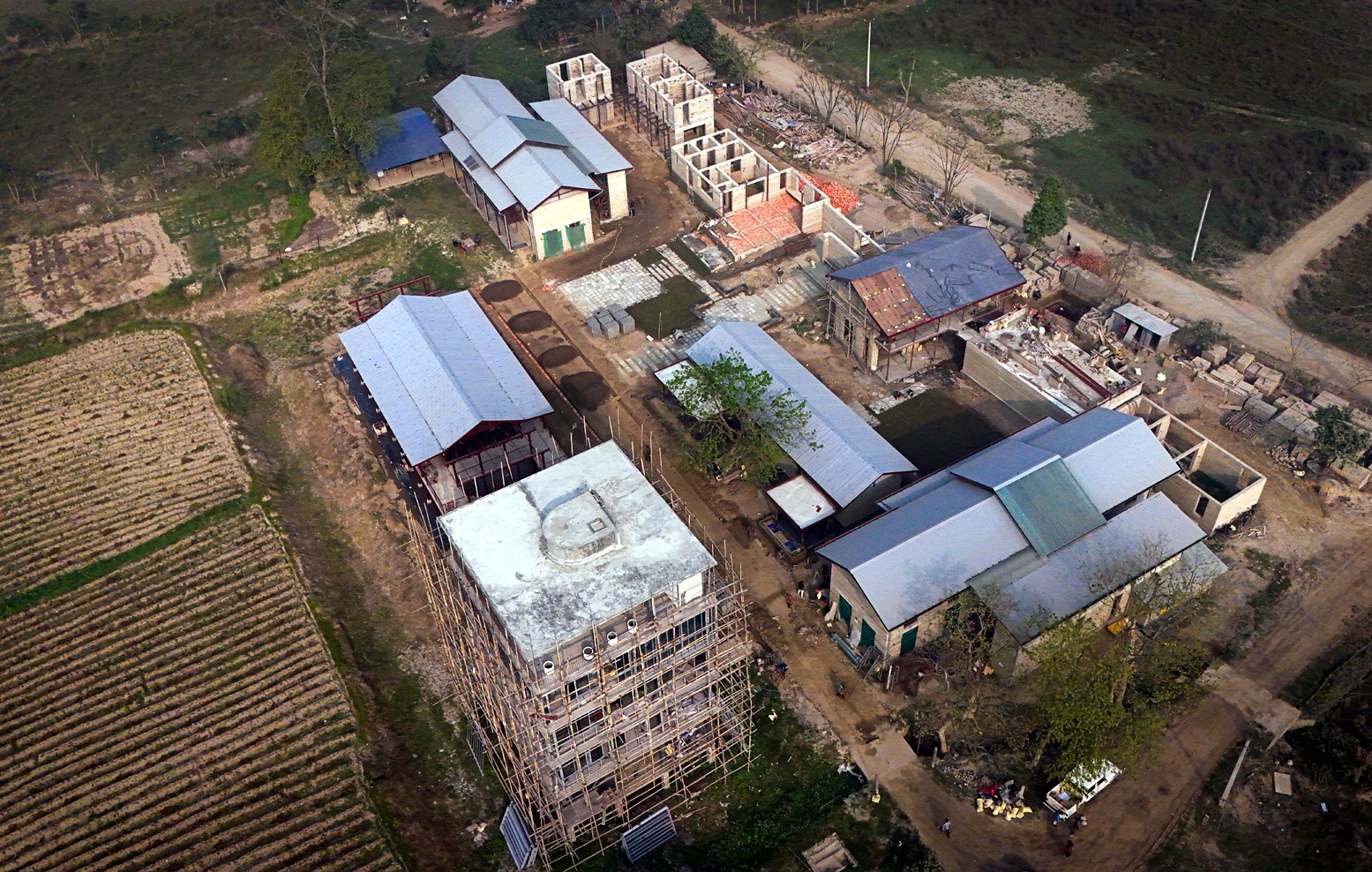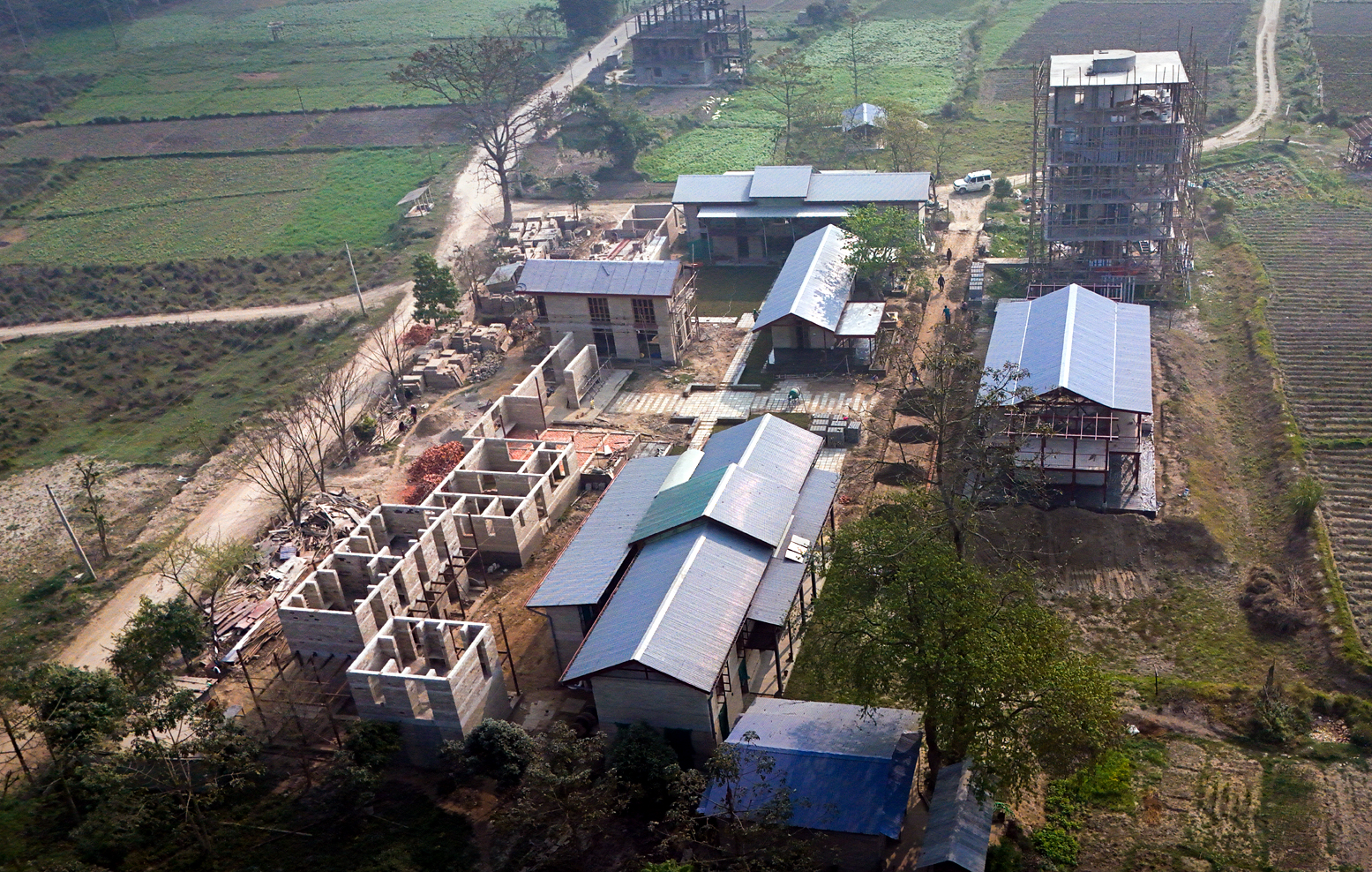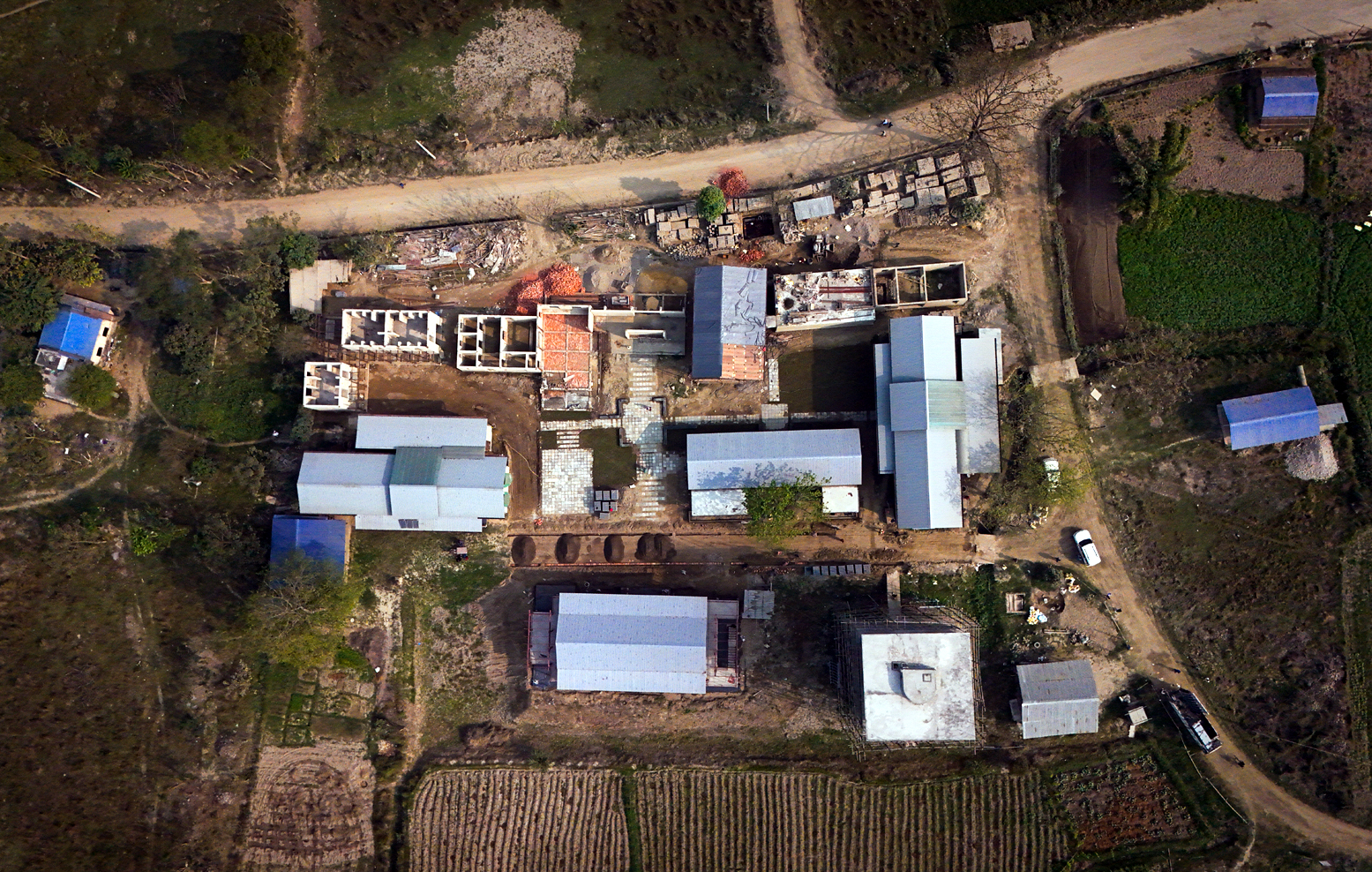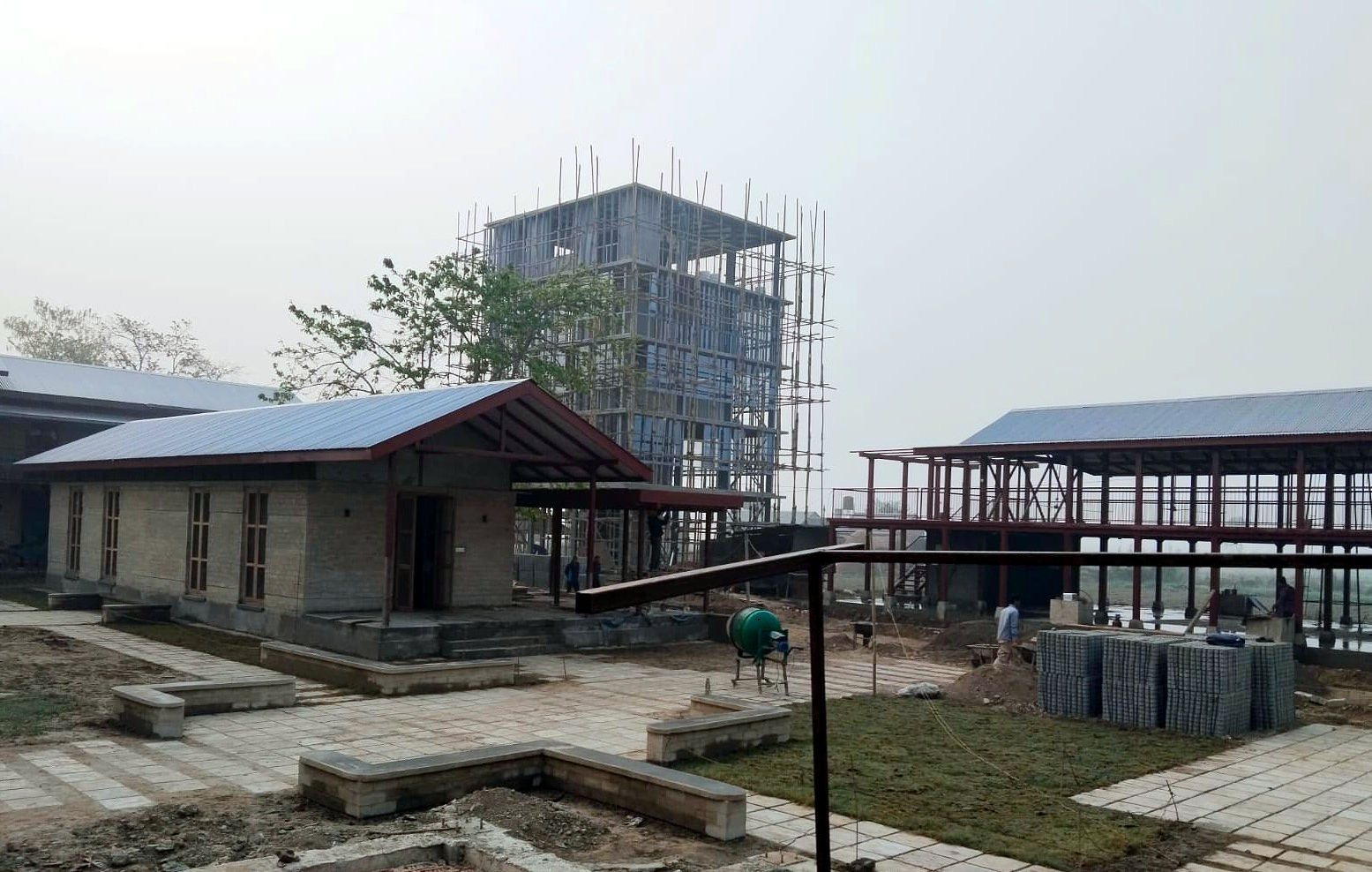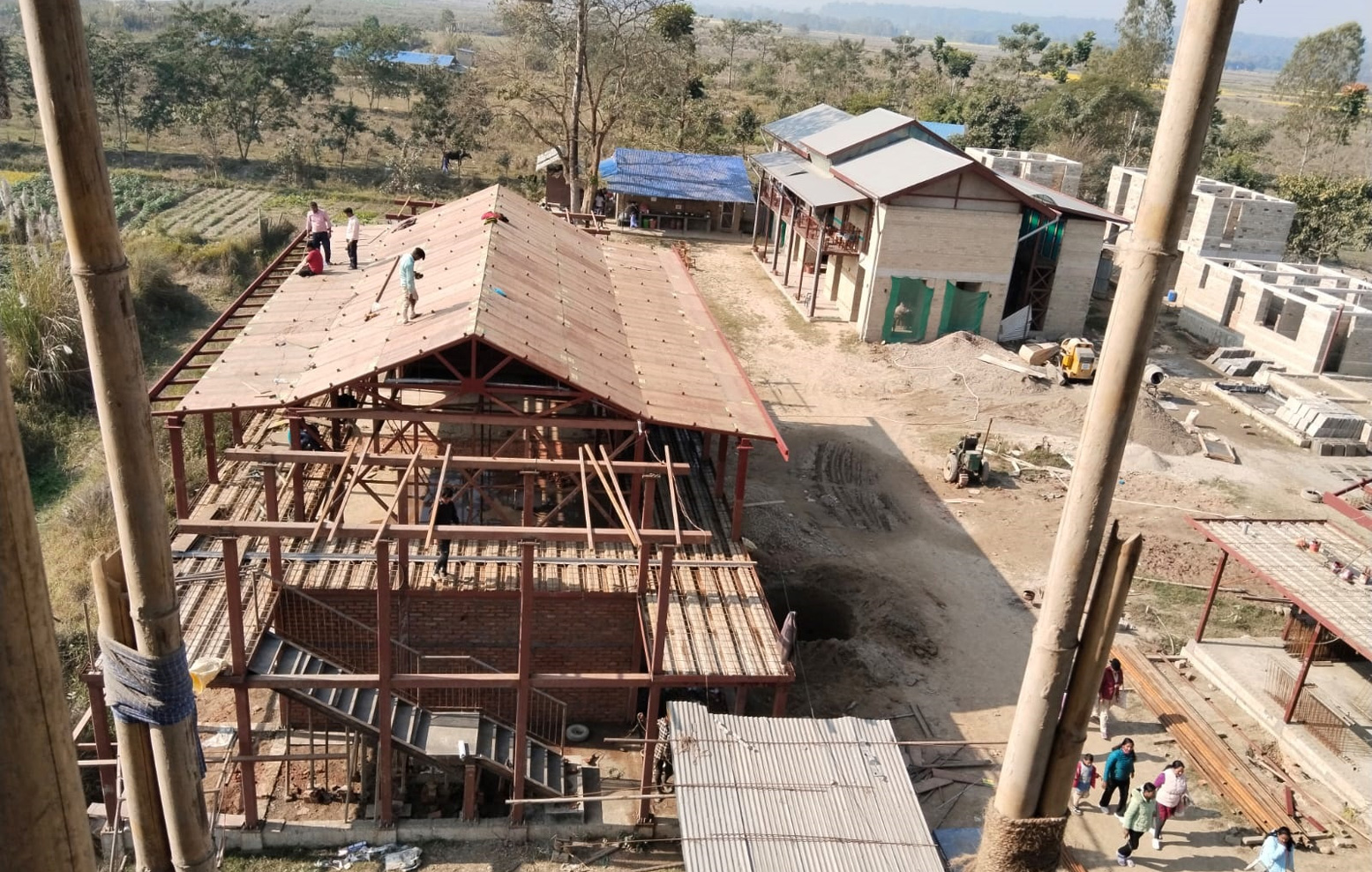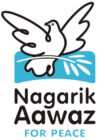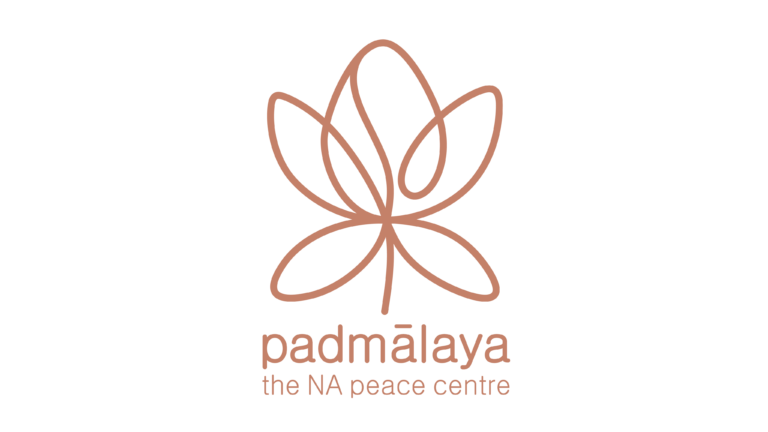
A space to reflect on past injustices, heal, and learn from Nepal’s armed conflict, while also facilitating ongoing, multi-dimensional peacebuilding efforts and learning within Nepal, the region, and globally. Through this initiative, we aim to establish a lasting peacebuilding center by the end of 2025.
Guided by the vision of our founder, Rita Thapa, Nagarik Aawaz is building the Padmalaya in Madhyabindu Municipality, Nawalpur District, to preserve the memories of Nepal’s armed conflict and create a sanctuary for healing and learning. Set within the buffer zone of Chitwan National Park, the center will offer a space to reflect on the past, honor losses, and build a peaceful future. With generous support from both Nepali and International donors, the center is expected to be completed by the end of 2025.
Padmalaya will serve as a place to remember past injustices, heal, and learn from the country’s history of conflict, while also acting as a center for peacebuilding efforts. It will provide a safe space for affected communities, peacebuilders, and future generations to come together, learn, and commit to peace. The center will also be a hub for peacebuilding knowledge and collaboration, promoting dialogue among people from different backgrounds. Built with eco-friendly materials like locally-made Compressed Stabilized Earth Blocks (CSEB), Padmalaya involves the local community in its construction, with technical support from engineers. Nagarik Aawaz has ensured the center reflects local culture and climate by integrating seven peacebuilding programs throughout the project.
Padmalaya has made remarkable progress in its mission, with significant achievements including the construction of 10 buildings using eco-friendly Compressed Stabilized Earth Bricks (CSEB), a sustainable material produced by local communities and mostly by women. This initiative not only supports the environment but also empowers the local community by creating jobs. In the first phase of the project, NA successfully completed four buildings: Sukarma (library), a temporary kitchen, and two dormitories named Padmini and Padmadhar. The Padmadhar dormitory, originally designed as a residential space, is currently being used as NA’s temporary office. Additionally, the Samjhana Building, which was initially an office, has now been repurposed as another dormitory. These facilities became fully operational in March 2024, and NA hosted the inaugural of Inter-Generational Feminist Forum (IGFF): Anupam Campaign, a significant event that drew over 200 participants from across the nation. Since the event, NA has continued its efforts by organizing a range of residence and non-residence training sessions, orientations, and workshops aimed at fostering community growth and skill development. Padmalaya has become a vital space for discussing past injustices, supporting healing, and strengthening peace efforts, ensuring it will play an important role in Nepal’s future peacebuilding journey.
Padma-Sarthak Campaign
Led by our founder, Rita Thapa, Nagarik Aawaz works to bring Padmalaya to fruition, Nagarik Aawaz seeks Nepali lead donors who can gift 20, 15, 10, 5, or 1 lakh each. Preserving these memories is critical for all Nepalis. “We live in a two-hundred-year present,” says academic practitioner John Paul Lederach. Remembering and reconciling with the past is not only the responsibility of those directly affected by the war but of all Nepalis. The Padma-Sarthak Campaign (2023-2024) aims to raise 2 crore Nepali rupees from Nepali donors. Nagarik Aawaz trusts that this enables to lend significantly to Nepal’s ongoing peacebuilding.
PADAMALYA IN PHOTOGRAPHS
